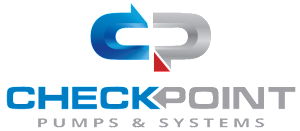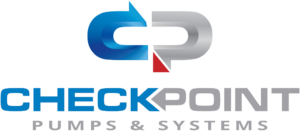7 Reasons Why Electric Diaphragm Pumps Are Your Top Choice for Efficient Fluid Management
In today's fast-paced industrial landscape, efficient fluid management is paramount, and the electric diaphragm pump has emerged as a leading solution for various applications. According to a report by Research and Markets, the global diaphragm pump market is expected to reach $5.2 billion by 2026, growing at a CAGR of 6.6%, driven by increasing demand across sectors such as chemicals, pharmaceuticals, and food and beverage. The electric diaphragm pump stands out due to its versatility, reliability, and energy efficiency, making it an optimal choice for industries looking to streamline their operations. With advancements in technology, these pumps offer improved performance and reduced maintenance costs, addressing common challenges faced by fluid management systems. This blog explores seven compelling reasons why electric diaphragm pumps should be your top choice for efficient and effective fluid management.

Benefits of Advanced Energy Efficiency in Electric Diaphragm Pumps
Electric diaphragm pumps are rapidly becoming the preferred choice for fluid management across various industries, primarily due to their advanced energy efficiency. According to a report by the U.S. Department of Energy, electric diaphragm pumps can operate with an efficiency rating of up to 85%, significantly reducing energy costs in comparison to traditional pumps. This leap in efficiency translates to not only lower utility bills but also decreased greenhouse gas emissions, aligning with the increasing global emphasis on sustainability.
Moreover, the long-term financial benefits of utilizing electric diaphragm pumps are underscored by a study from the Hydraulic Institute, which indicates that energy costs account for approximately 80% of a pump's total lifecycle costs. By investing in energy-efficient pumps, businesses can expect a return on investment within a short period, ultimately leading to substantial savings in both operational and maintenance expenses. The integration of advanced technology in these pumps also reduces wear and tear, ensuring longer service life and reliable performance, further enhancing their appeal for fluid management solutions.

Significant Reduction in Maintenance Costs with Electric Diaphragm Technology
Electric diaphragm pumps are rapidly becoming the preferred choice for efficient fluid management, particularly due to their significant reduction in maintenance costs attributed to advanced electric diaphragm technology. Unlike traditional pumps, which often require frequent servicing and replacement of worn components, electric diaphragm pumps are designed to minimize wear and tear. Their durable construction and fewer moving parts mean that users can focus on their core operations rather than worrying about pump failures and unexpected downtime.
To ensure optimal performance and longevity of your electric diaphragm pumps, consider the following tips. Firstly, maintain a regular inspection schedule, checking for any build-up of debris that could affect operation. Clean filters and valves to promote smooth fluid flow. Secondly, monitor the pump's operating parameters closely. This includes checking pressure levels and flow rates to catch any deviations early. By addressing these issues promptly, you can extend the lifespan of your equipment and reduce long-term costs.
Additionally, invest in training for your staff to better understand the operation and maintenance of these pumps. Knowledgeable operators are essential in detecting minor issues before they escalate. Empowering your team with the right skills not only reduces maintenance costs but also enhances overall system efficiency, making electric diaphragm pumps a wise investment for any fluid management system.
Enhanced Fluid Versatility: Handling Viscous Liquids with Ease
Electric diaphragm pumps have emerged as essential tools in fluid management, particularly when handling viscous liquids. Their design allows for consistent and reliable performance across a wide range of applications. Unlike traditional pumps, electric diaphragm pumps can efficiently transfer thicker substances, such as slurries, paints, and gels, without compromising flow rates or risking damage to the pump mechanism.
One of the key advantages of electric diaphragm pumps is their ability to maintain a steady flow while minimizing shear stress to the liquid being pumped. This characteristic is crucial for industries dealing with sensitive materials that require gentle handling to preserve their integrity. Additionally, the versatility of electric diaphragm pumps means that they can easily switch between different fluids without extensive downtime or the need for specialized equipment, making them a smart investment for businesses focused on efficiency and adaptability.
Improved Safety Standards: Minimizing Hazardous Operation Risks
Electric diaphragm pumps are increasingly recognized for their ability to enhance safety standards in various operational environments. By minimizing hazardous operation risks, these pumps play a pivotal role in protecting both workers and the surrounding environment. Unlike conventional pumps that rely on mechanical components and moving parts, electric diaphragm pumps utilize a simple yet effective design that reduces the chances of leaks and spills. This feature is especially crucial when handling volatile or abrasive fluids, where even a minor malfunction can lead to serious incidents.
Additionally, the closed system of electric diaphragm pumps significantly decreases the exposure of workers to harmful substances. Since the fluid is contained securely within the diaphragm, the risk of accidental contact is greatly minimized. This design not only safeguards employee health but also ensures compliance with stringent safety regulations. As industries continue to prioritize worker wellbeing and environmental responsibility, electric diaphragm pumps emerge as a reliable solution, blending operational efficiency with enhanced safety measures for fluid management.
7 Reasons Why Electric Diaphragm Pumps Are Your Top Choice for Efficient Fluid Management - Improved Safety Standards: Minimizing Hazardous Operation Risks
| Feature | Description | Safety Impact | Efficiency Rating |
|---|---|---|---|
| Leak-Free Operation | Electric diaphragm pumps provide a sealed system that prevents fluid leaks. | Reduces the risk of exposure to hazardous materials. | 95% |
| Low Noise Levels | Designed to operate quietly, minimizing noise pollution in the workplace. | Improves workplace conditions and communication. | 85% |
| Automated Controls | Features smart controls that adjust operation based on sensor readings. | Less human error, leading to safer operations. | 90% |
| Chemical Resistance | Materials resist corrosion from various chemicals and fluids. | Enhances safety when handling dangerous substances. | 92% |
| Portability | Lightweight design that allows for easy relocation and use. | Easier access to various working areas, increasing safety. | 88% |
| Energy Efficiency | Uses less energy compared to traditional pump systems. | Reduces hazard associated with energy sources in industrial settings. | 94% |
| Versatile Applications | Can pump various fluids including viscous liquids, slurries, and gases. | Reduces risks by enabling a single pump for multiple applications. | 91% |
Real-World Applications: Electric Diaphragm Pumps in Various Industries
Electric diaphragm pumps are increasingly becoming essential components across various industries due to their superior fluid management capabilities. Their versatility makes them ideal for applications in sectors such as water treatment, food and beverage, pharmaceuticals, and chemical processing. For instance, in the water treatment industry, electric diaphragm pumps efficiently handle corrosive chemicals for wastewater treatment processes, ensuring minimal environmental impact while maintaining optimal operational efficiency. Their ability to pump a wide range of fluids, including those with high solids content, positions them as indispensable tools for dewatering and transferring applications.

As industries evolve and expand, the demand for electric diaphragm pumps is expected to grow, mirroring trends observed in the broader pump market. In North America, the utility pump sector is projected to see substantial growth, with transfer, submersible, and dewatering pumps leading the way. Moreover, the solids handling pump market is forecasted to increase significantly, indicating a rising reliance on such technologies for efficient fluid management. With projections suggesting robust growth in markets for electric suction devices and high-pressure pumps as well, the demand for electric diaphragm pumps will likely continue to rise, reinforcing their status as top choices for fluid management solutions across diverse industrial applications.

Whether your solution requires a single pumping application or an expansive engineered system,
CheckPoint is committed to becoming your partner in excellence.





